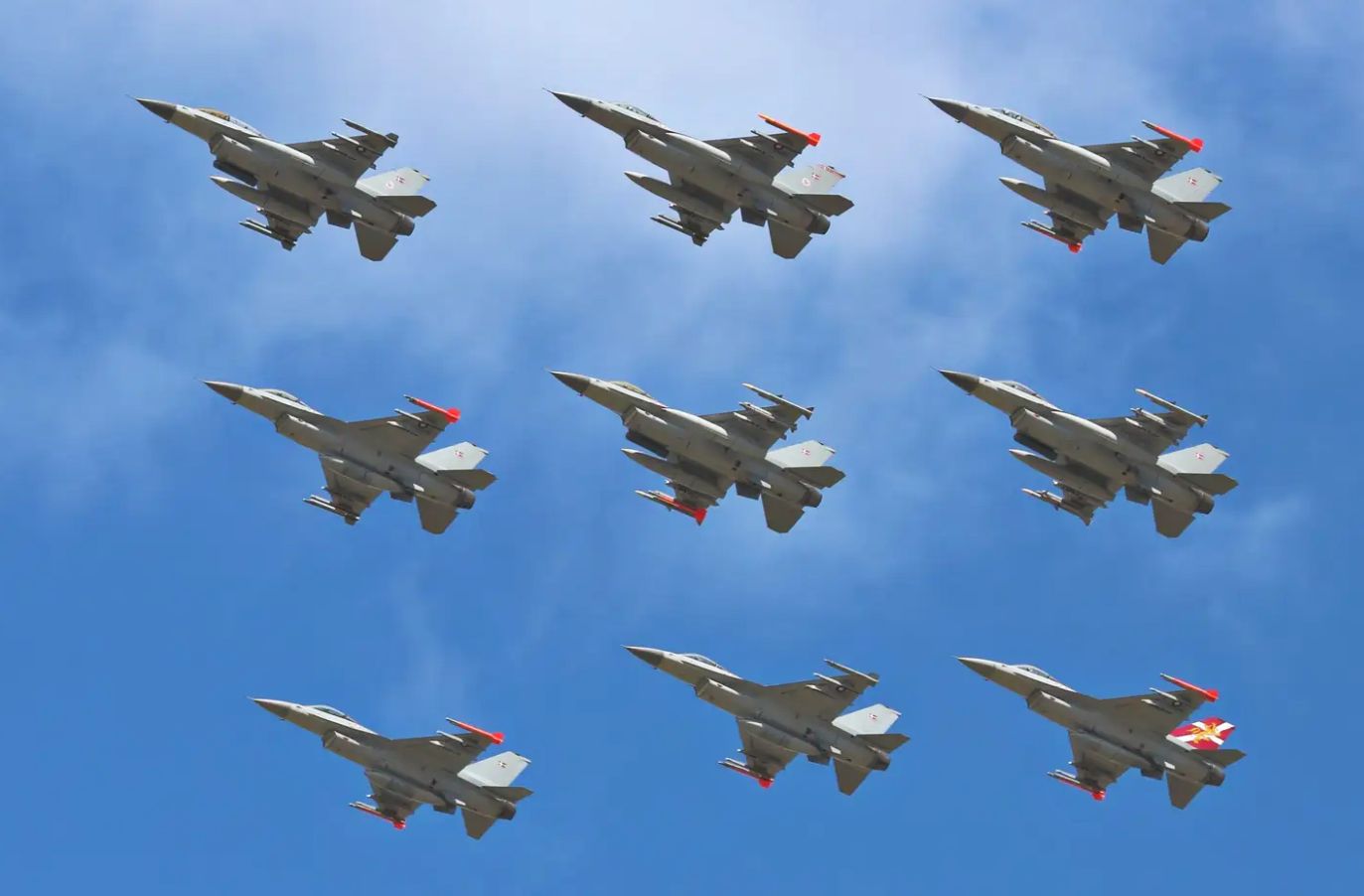There are speculations that Ukraine could get F-16 fighter jets as early as the spring of 2024. To operate these cutting-edge warplanes, Kyiv must prepare ‘customized’ airfields to fly the fighting falcons.
As Ukraine tirelessly works to bring the F-16s home, First Deputy Defense Minister of Ukraine, Lieutenant General Oleksandr Pavlyuk, said on Telegram that as part of its efforts, it is carrying out a thorough assessment of its airfields to accommodate the combat-capable fighter jet.
At the same time, Ukrainian engineers and pilots have been receiving training in the West to fly the aircraft. Ukraine is integrating the multirole F-16 fighter into its armed forces structure in line with the international Military-Air Coalition and locally.
“We are working on implementing the Fast Track by the end of 2024. An assessment of airfields for multi-role fighters has been conducted within its framework. Additionally, our pilots and engineers have been undergoing training on the F-16 since August 2023 through a wide range of programs,” Pavliuk said.
He stated that intricate and rigorous work is being done in Ukraine to prepare the infrastructure, secure it, use air defense systems, and address several other concerns. This starkly contrasts with flying Soviet-origin aircraft like the Su-24, Su-25, Su-27, and MiG-29s that the Ukrainian Air Force has extensively deployed since the beginning of the conflict in 2022.
Since Ukraine intensified its pitch for F-16 fighter jets from its NATO partners, some military analysts have emphasized that it would not be durable for Ukraine to operate F-16s. The experts warned as early as April 2023 that the Ukrainian Air Force would need specially constructed airbases since it is so delicate, and Russia may be able to locate and attack those locations. You can read a detailed analysis by EurAsian Times here.
At the time, Justin Bronk, an air-warfare expert with the British think tank Royal United Service Institute (RUSI), explained that the F-16s needed particular infrastructure as it has a large air inlet beneath the nose that “sucks everything from the ground directly into it.”
F-16s generally require extremely hygienic, extremely well-maintained air bases. Bronk said the F-16 is designed with an exceptional thrust-to-weight ratio, and its landing gear is “fairly lightweight,” meaning that “there is no more weight on the jet than there needs to be.” But he claimed that the airfields and bases in Russia and Ukraine are essentially archaic and unfit for the F-16 Fighting Falcon or certain other Western planes.
Bronk continued, “You’d be looking at resurfacing work on runways and possibly extension work, all of which are highly visible” to Moscow’s sources on the ground and to Russia’s satellites.
A former F-16 fighter pilot anonymously echoed the same views to the EurAsian Times. “Yes, it is true that F-16 is very FOD sensitive, so the airfield should be designed with this in mind. The Ukrainians would have to do some refurbishment work to accommodate these fighter jets.”
According to military experts TASS spoke with in August last year, Ukraine does not currently have the infrastructure needed to house F-16 fighter jets. They further warned that if attempts are made to develop such airfields and other facilities, they will be destroyed during construction even before they are completed.
Ukraine has come a long way since, and its admission about assessing and improving the airfields suggests that the challenges are being worked out, perhaps with Western assistance. However, the Ukrainian minister did not give many details about the nature of work on these airfields.
Russia, on its part, continues to assert that the delivery of F-16s to Ukraine would not be a game changer for the country, banking on the fact that most of its long-range missiles put almost all of the Ukrainian airfields in the firing line. It has also gone so far as to warn that if these jets launch from a neighboring NATO country, Moscow would retaliate.
However, it will still be some time before Ukraine receives its NATO partners’ first batch of F-16s.
F-16s Have Been Delayed
According to the Danish newspaper Berlingske, which cited the Ministry of Defense of Denmark, the country’s gift of F-16 warplanes to Ukraine will be delayed by up to six months.
Since Russia began a full-scale invasion of Ukraine in February 2022, Kyiv has maintained that it needs fighter jets to advance militarily. Denmark, the Netherlands, Norway, and Belgium have declared their willingness to transfer F-16s built in the United States to Kyiv.
“The selection (of pilots, ed. ) is underway, training is about to begin, and around New Year, the first group of aircraft will hopefully leave Denmark for Ukraine — around six. Hopefully, another eight planes will be sent to Ukraine next year and the year after five,” the Danish Prime Minister said last August.

Troels Lund Poulsen, the Danish Minister of Defense, stated in October that the first jets would be delivered by April 2024. However, the jets are not coming in time as promised by Denmark, which is a significant contributor to Ukraine’s war defense and was among the first nations to commit to sending fighter jets manufactured in the United States to Kyiv.
The Norwegian government said this week that two F-16 fighter jets Norway gave will be used for training by Ukrainian pilots in Denmark. It was reported that the Ukrainian combat aviation pilots completed their basic training in the United Kingdom, allowing them to begin F-16 fighter aircraft proficiency training in Denmark.
So, while the preparations are underway in Ukraine to field the fighter jet, it will still be several months before its fighter pilots can start conducting missions on the plane against Russia.
- Contact the author at sakshi.tiwari9555(at)gmail.com
- Follow EurAsian Times on Google News